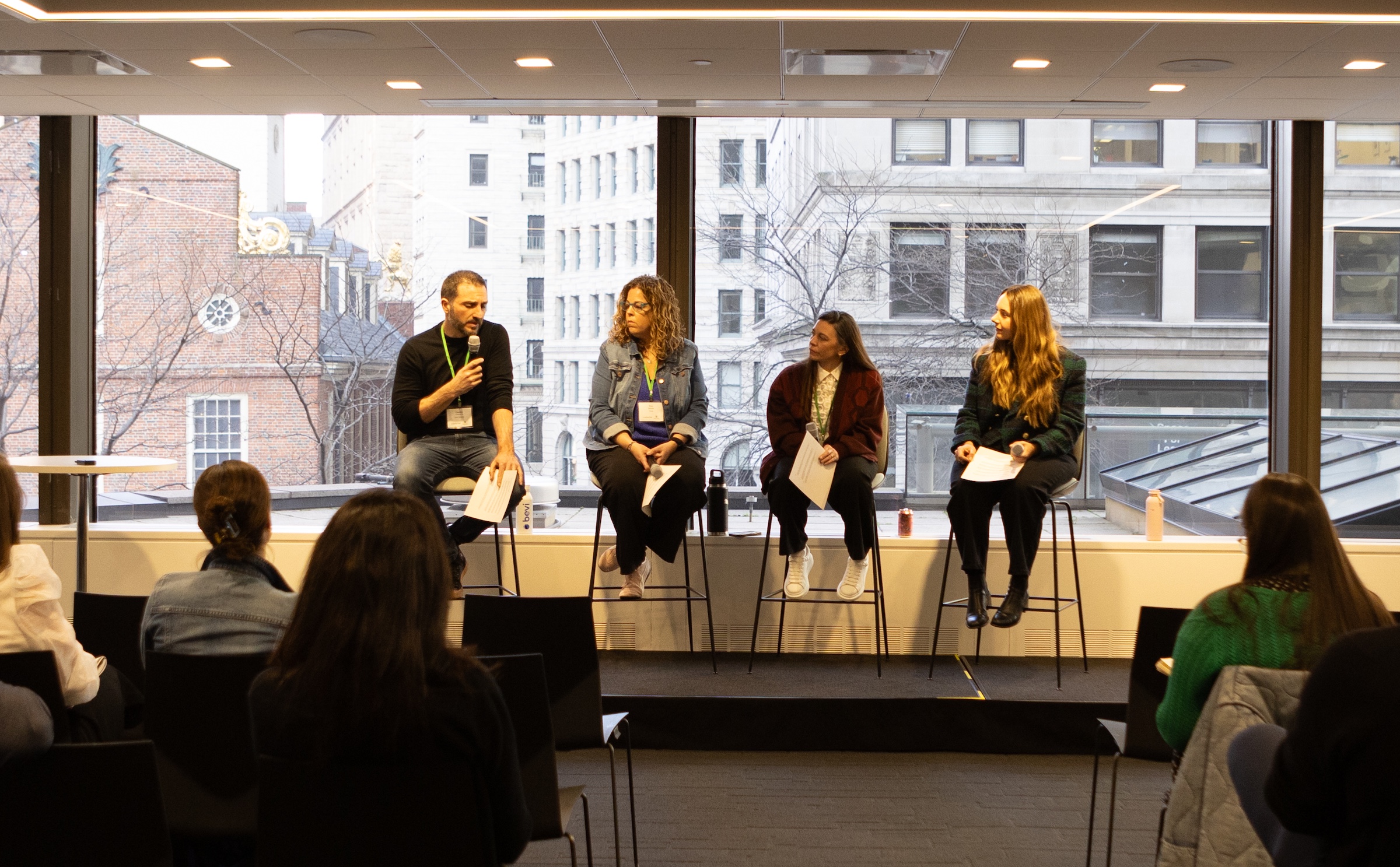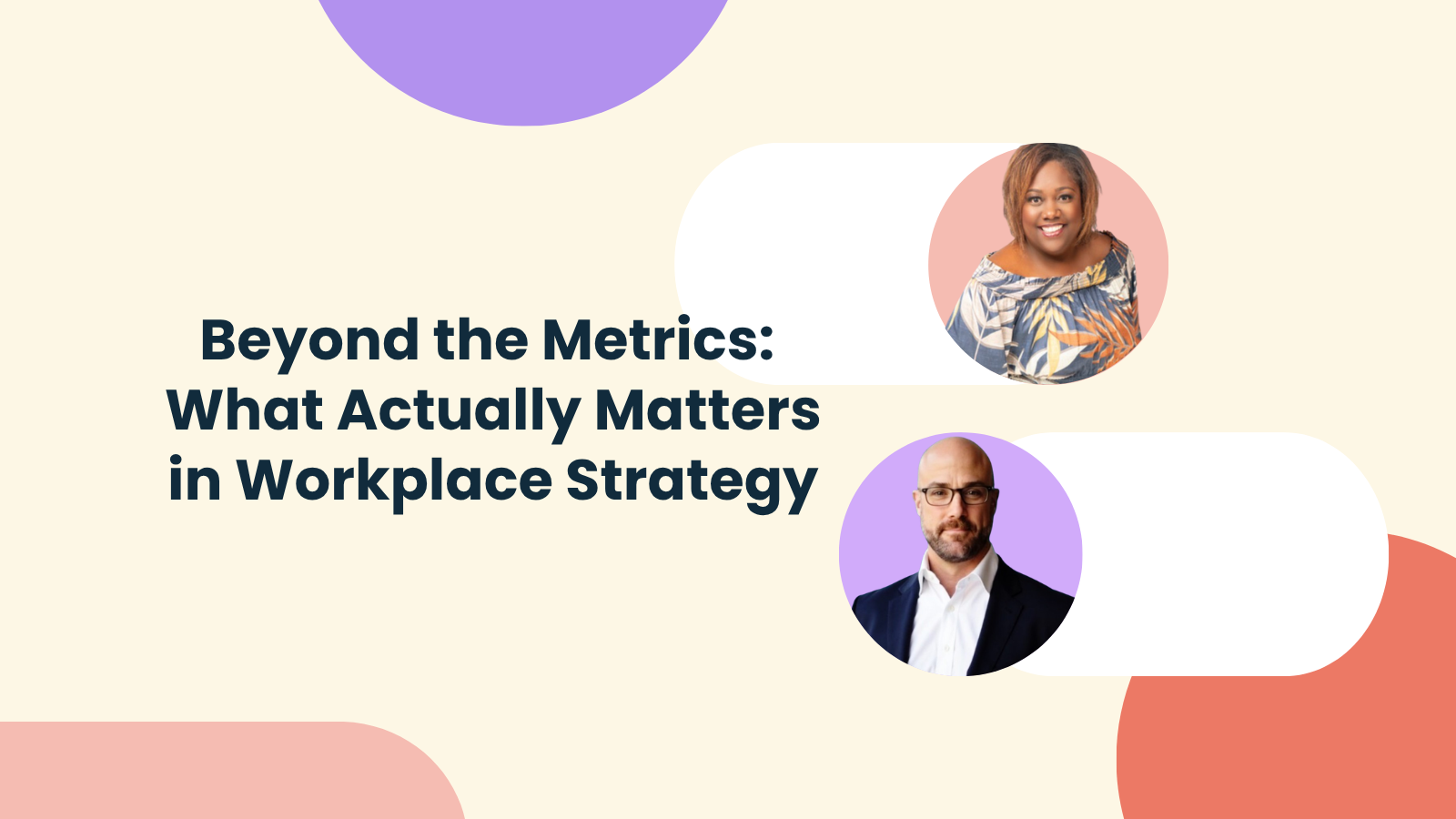This is a recap of the webinar held on Nov 13th, 2025, with workplace leaders from Gilead Sciences, Wayfair, and DoorDash.
Most workplace teams are sitting on mountains of data—badge swipes, sensor readings, occupancy reports—but struggle to turn insights into action.
In our latest webinar, we brought together three workplace leaders who've figured out how to bridge that gap: Dee Dee Lim (Senior Director, Head of Workplace at Gilead Sciences), Svetlena Garg (Head of Portfolio Analytics & Technology at DoorDash), and Michael Keimig (Head of Offices & Industrial Real Estate at Wayfair).
The conversation covered everything from building data infrastructure from scratch to designing for neurodiversity, navigating strong CEO opinions, and using AI without losing the human element.
Here are the key takeaways.
Different Policies, Same Goal
All three companies have maintained consistent workplace policies since the pandemic—but their approaches vary significantly.
Gilead Sciences operates with a 3-day return-to-site mandate, though their scientists have been on-site throughout COVID working on treatments. With 8 million square feet across 45 countries, their focus has shifted to evolving spaces to fit diverse user needs.
Wayfair has required 4 days in-office (Monday through Thursday) since 2021, with assigned desking and a strong emphasis on in-person collaboration. Managing 33 million square feet across office and industrial portfolios, they've seen strong retention with this approach.
DoorDash rolled out a flexible workplace model in 2022, empowering individual teams to determine what works best for their roles—whether on-site, hybrid, or remote. "Our approach is rooted in flexibility and trust," Svetlena explained.
Despite different mandates, all three emphasized that the real work isn't in changing policies—it's in iterating on the employee experience when people are in the office.
Data and Design Are Partners
One of the strongest themes throughout the conversation: data-driven decisions and human-centered design aren't competing priorities. They complement each other.
Dee Dee shared how Gilead uses data to enhance employee experience: "We're using data to help us look at how people are using their spaces, particularly the amenity spaces. We realized no one was using conference rooms in our lobby area, so we increased the size of the lobby entrance and added our company mission and branding to drive that sense of belonging when employees enter the building."
The key insight? Don't think about balancing data and human experience—use data to drive better human-centric outcomes.

Missed the live conversation? Watch the recording to hear the full discussion, including audience Q&A.
Watch the replay
Building Cross-Functional Collaboration
Michael faced a unique challenge at Wayfair: teams that should have been collaborating on space decisions simply weren't talking to each other.
His approach? Start with trust-building and structure.
"Before I could really build any type of collaboration, I tried to identify where we could add structure, and then how cross-functionality could actually add value," Michael explained. "It became about building trust and getting people comfortable that these new questions weren't there to step on toes, but rather to connect dots."
He created a framework where people could contribute their expertise without feeling their ownership was being challenged, and established a real estate committee with C-suite visibility to ensure alignment.
The result? Better forecasting, smarter design decisions, and teams moving in the same direction.
AI as Assistant, Not Replacement
All three leaders are using AI, but with clear boundaries about what should stay human.
Michael's team uses ChatGPT Enterprise for lease abstraction and tedious document work. His lease admin created custom GPTs that extract specific data points, which then feed directly into their VisualLease system. "We use it to take care of the more tedious, repeatable work so we can focus on higher value decisions."
Svetlena's team is training AI models specifically on DoorDash's corporate real estate data. "If someone wants to know which sites are currently 10% over budget, AI can give them that answer by querying the data we have sitting in the background. They don't have to dig through a report."
Dee Dee offered a different perspective: "I think AI scares some people because it has the word 'artificial.' We don't want to use AI to create human lookalikes—we want to use AI as a tool to support the process and provide human-centric experience."
Michael summed it up perfectly: "AI should support the work that needs to be done, not replace the human elements and human intuition that makes working with people so meaningful."
Designing for Neurodiversity and Wellbeing
Dee Dee shared Gilead's work on neurodiversity-focused design, partnering with HOK and workplace strategist Kay Sargeson.
"36% of adults with ADHD may not know they have it," DeeDee noted. "This morning, I got a text from a friend in London who just got diagnosed with ADHD at 52 years old. She's taking medication now and realizing why she hasn't been able to perform the way she did before."
Gilead's approach includes creating varied environments—quiet rooms, café settings, focus spaces, and two-person rooms for less formal one-on-ones. "One size doesn't fit all. Not everyone thrives in the same environment, and our spaces should reflect that."
They're also exploring design for menopause, noting that half a billion women aged 45 to 65 are in the workplace globally. "We need to start thinking about how to design for them better, as well as for everybody."
Want to stay connected with workplace leaders navigating the same challenges you face? Sign up for our next webinar to join conversations about hybrid work, workplace strategy, and real estate.
See upcoming events
Making Data Actionable: Real Examples
DoorDash's evolution: Started with badging data, which revealed people were coming in primarily for free lunch. Switched to Wi-Fi data for better accuracy. Now using sensors to understand passive desk usage versus active usage—leading to insights about needing more lockers and meeting rooms rather than dedicated desks. These insights directly informed their New York office design.
Gilead's lobby transformation: Conference room data showed zero utilization in their lobby area. They removed the underused rooms, expanded the entrance, and added company mission and branding to create a sense of belonging the moment employees enter.
Wayfair's two-person room discovery: At a previous company, Michael used Verge Sense data mid-construction and actually pivoted to add Zoom equipment to two-person rooms because data showed they were the most used rooms in the company. He's applying those insights at Wayfair's new Boston headquarters.
Navigating Leadership Vision with Data
Michael faces an interesting challenge: Wayfair's CEO believes people working at desks creates energy and buzz in the office—a philosophy that runs counter to the industry trend toward more phone booths and focus rooms.
"We have a fairly strong founder-led culture here, and our leaders have firm opinions that come from a deep understanding of the company and employees," Michael explained. "My best approach is to pick a few strategic areas where I think I can make real impact and bring leadership along that journey. Data plays a huge part in that."
He focuses on where data, his expertise, and leadership vision can converge—influencing through conversation rather than enforcing his views. "I don't want to win every argument. It's more about where we can come together to serve and create the culture we're trying to create."
Key Skills for Workplace Leaders
When asked about overlooked skills workplace leaders need, the panel emphasized:
Listening and adaptability - "We can get siloed into trying to solve things because we think we know what's right based on previous experience," Michael noted. "Being able to listen—whether to leadership or people coming in every day—and translate their needs into design or programming is critical."
Predicting instead of reacting - Dee Dee shared a phrase that resonated with her: "Let's predict instead of react. We can try to predict people's behaviors, predict what next year's projects could look like, predict how the workplace can evolve—rather than react to day-to-day fire drills."
Cross-functional relationship building - All three emphasized the importance of working across HR, IT, finance, and operations. "You don't operate in a silo," Liza noted. "At the end of the day, you're all working towards mutual goals."
What's Next for 2026
We asked each leader what they're most focused on solving in 2026:
Michael: "Continuing to eliminate tedious work with AI and tools so we can continue collaboration across functions and make smarter decisions that drive connection, efficiency, and the human element."
Svetlena: "Transforming how we use metrics and AI—shifting from just tracking historical performance to building predictive, insight-driven systems that help us make better workplace decisions in real time."
Dee Dee: "I heard the word 'happy' at the beginning of this call, so I really would love for our employees to be happy with all the projects we're doing over the next year."
The Bottom Line
Whether you're managing 8 million square feet like Gilead, 33 million like Wayfair, or building flexible infrastructure like DoorDash, the principles remain consistent:
- Start with data foundations before jumping to AI
- Use data to enhance human experience, not replace it
- Build cross-functional relationships and trust
- Design for diverse needs—one size doesn't fit all
- Leverage AI for tedious work to focus on strategic thinking
- Listen, predict, and adapt rather than react
As Dee Dee perfectly summarized: "It's not about balancing data and human-centered design. They complement each other. You need data to drive the human-centric experience and the feedback loop."
Book a demo to see how Gable helps companies like yours manage hybrid, remote, and in-office operations: from desk bookings and visitor management to access to 20,000+ coworking spaces worldwide.
Get a demo





.svg)





.svg)
















.svg)













